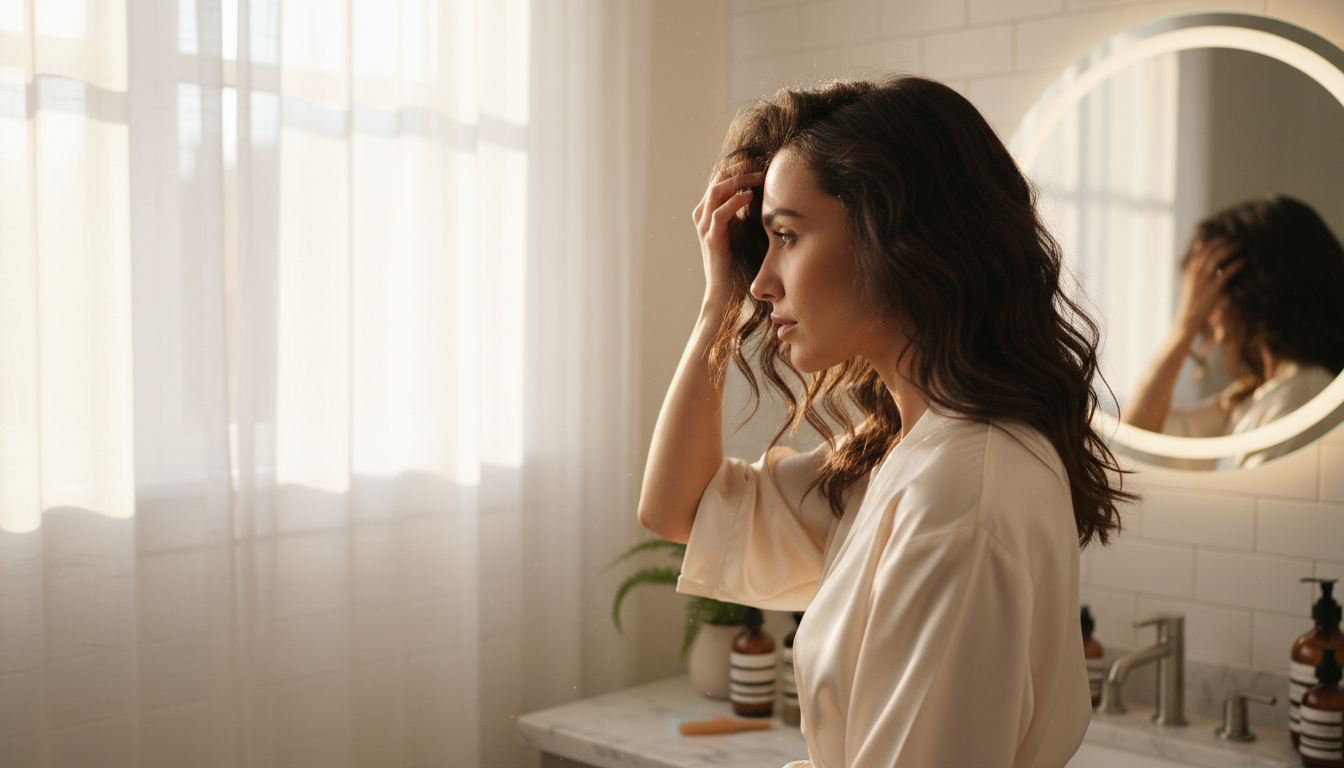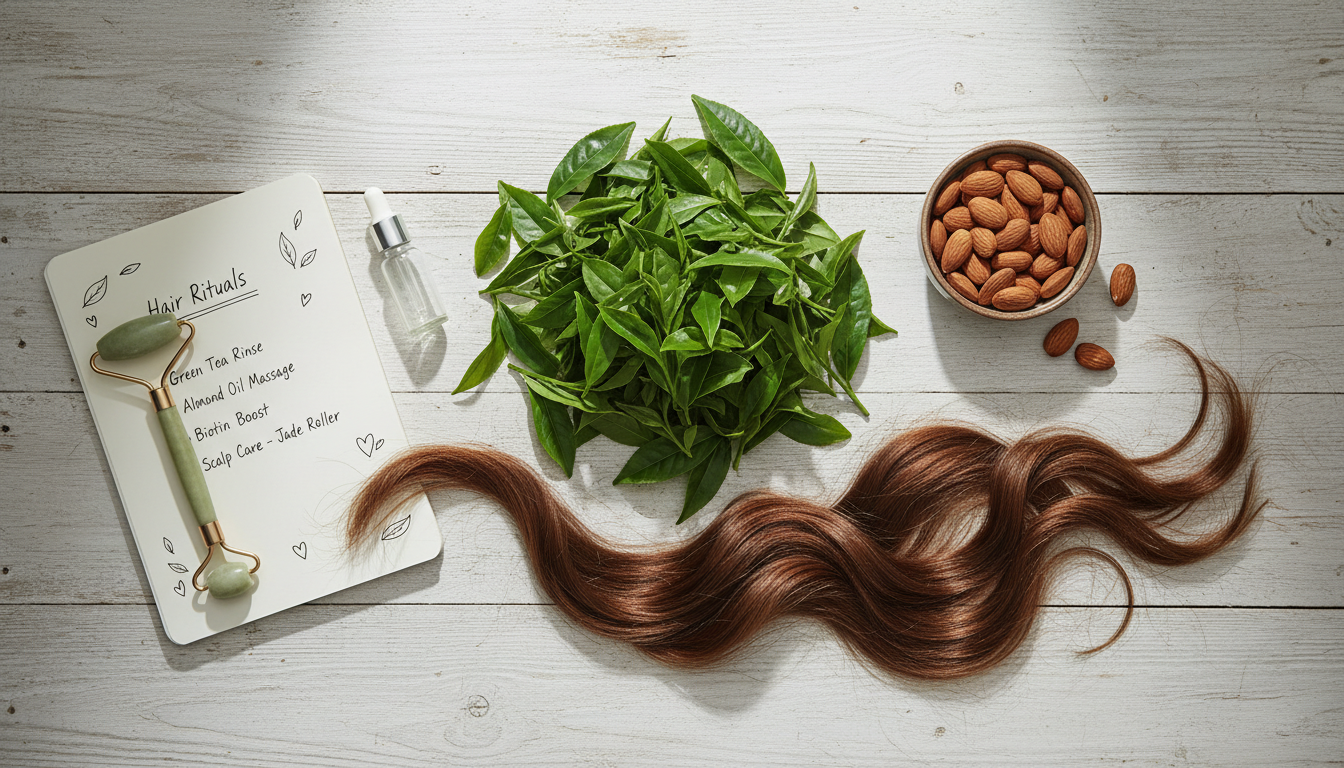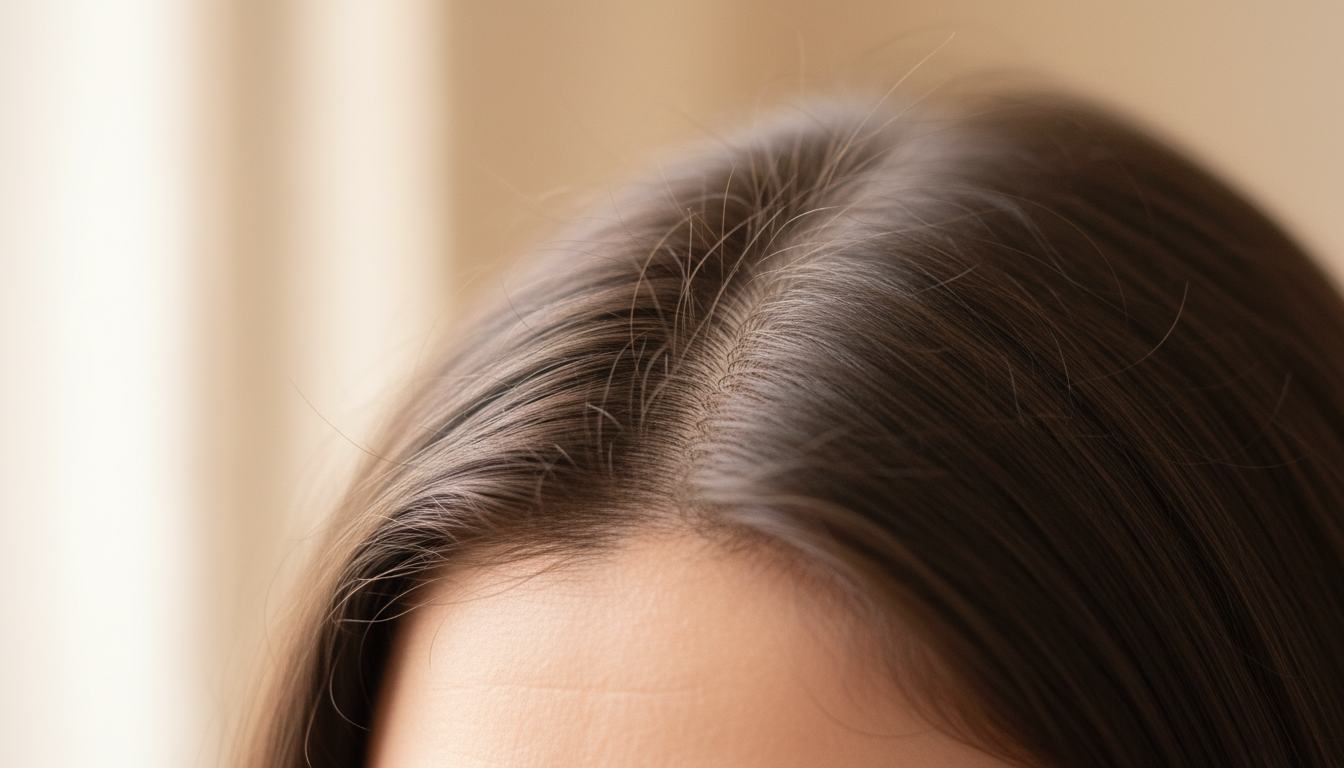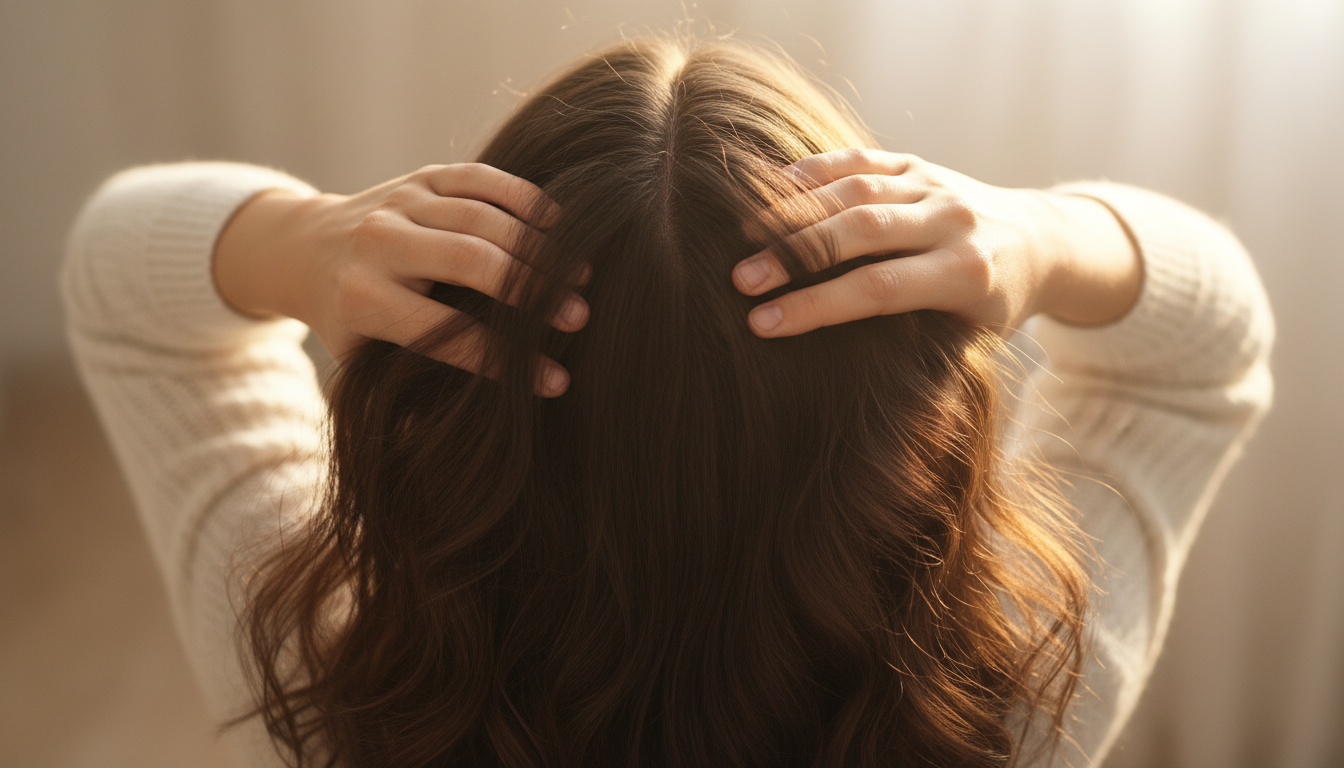10 Signs of Thinning Hair in Women (And What Most Women Miss)

Your Hair Has Been Thinning for Years - Here Are the 10 Subtle Signs You Probably Missed
Hey there, if you're a woman who's ever stared in the mirror wondering if your hair looks a bit different lately, you're not alone. Hair thinning sneaks up on us gradually, unlike the more obvious patterns in men, and many of us miss the early clues until it's been going on for 2-3 years. But spotting those signs of thinning hair in women early can help you take simple steps to support healthier strands. In this post, I'll walk you through 10 common yet overlooked signs, with practical tips like photo comparisons and easy self-checks to help you assess your own hair. Think of it as your personal visual guide to catching it sooner – because a little awareness goes a long way in keeping your hair feeling full and vibrant.
Why Women Miss Early Signs of Thinning Hair
Hair thinning in women is sneaky – it doesn't hit like a dramatic receding hairline that men often notice right away. Instead, it's a slow, diffuse process that spreads across the scalp, making it hard to spot until your ponytail feels noticeably thinner or your part line starts widening.

Many women I talk to say they first realize something's off during a routine style or when old photos pop up showing fuller hair from years ago. Hormonal shifts, stress, or even diet can play a role, but the gradual nature means we adapt without realizing. In my experience working with women on hair health, ignoring these early whispers can delay simple changes that support hair strength.
The good news? You don't need fancy tools to start noticing. Grab a baseline photo today under natural light, and compare it monthly. This self-awareness can catch signs of thinning hair in women before they become obvious, giving you time to nurture your scalp and strands with gentle care. Trust me, early detection feels empowering – it's like giving your hair a fighting chance from the start.
Sign #1: Wider Part Line (How to Measure with Photos)
One of the first signs of thinning hair in women is a part line that seems to creep wider over time. It's subtle, but if your middle part looks more like a river than a stream, it could be a clue.
To check this yourself, part your hair as usual and snap a close-up photo in consistent lighting – say, by a window each month. Measure the width with a ruler against the photo or just eye the difference. Many women notice this after hormonal changes like postpartum or perimenopause, where hair density dips slowly.
In practice, I've seen clients dismiss it as styling, but tracking photos reveals the truth. If it's widening, it often signals follicles producing finer hairs. Don't panic – this is your cue to be gentle with heat tools and consider scalp massages to encourage circulation. For more on this, check out our post on scalp massage for hair growth. Supporting your hair early with nourishing routines can help maintain that part's fullness.

Sign #2: More Scalp Visible in Certain Lighting
Ever catch your reflection in a brightly lit room and think, 'Wait, is that more scalp showing?' This is another sneaky sign of thinning hair in women, especially on the crown or along the part.
Lighting plays tricks – what looks full in dim light can reveal patches in sunlight or fluorescents. Tilt your head side to side in front of a mirror under different lights; if scalp peeks through more than before, it might indicate reduced density.
From what I've observed, this often pairs with daily wear and tear, like tight ponytails pulling hairs out. Women in their 30s and 40s frequently mention it during busy life phases. The fix? Opt for loose styles and add volume with lightweight sprays. Noticing this early lets you focus on scalp-friendly habits, like avoiding harsh brushing, to help keep things looking lush.
Sign #3: Ponytail Circumference Smaller (The Hair Tie Test)
Grab your usual hair tie and wrap it around your ponytail base – if it takes fewer loops than last year, that's a classic sign of thinning hair in women. A shrinking circumference means less hair volume overall.
This test is simple: Do it on a non-wash day for consistency, and note the wraps (aim for the same spot each time). Many women overlook this because ponytails still 'work,' but a photo timeline shows the change.
In real life, stress or nutritional gaps can trigger this gradual loss. I've had clients shocked to see their ponytail slimmed from four wraps to three over months. It's a wake-up call to incorporate protein-rich foods and gentle detangling. For tips on styling without adding stress to thinning hair, see our guide on creating the perfect ponytail for thin hair. Early awareness here supports fuller-feeling hair without drastic measures.
Sign #4: More Hair in Shower/Brush (But How Much is Normal?)
Shedding a handful in the shower? It's normal to lose 50-100 strands daily, but if it's suddenly more – like clumps on your brush – it could signal signs of thinning hair in women.

Track it: Collect hair from your drain or brush weekly and compare volumes (a quick photo helps). What's 'more' varies, but doubling your usual amount warrants attention, especially post-illness or stress.
Women often brush it off as seasonal, but consistent excess might point to telogen effluvium, a temporary shed. From experience, gentle washing and wide-tooth combs reduce fallout. If it's concerning, easing into a nourishing routine can help stabilize things – no need for alarm, just observation.
Sign #5: Baby Hairs Along Hairline (Miniaturization)
Those fine, short 'baby hairs' framing your face? While cute, an increase along the hairline can be a sign of thinning hair in women due to miniaturization, where follicles shrink and produce weaker strands.
Check by gently parting at the front – if you see more vellus hairs than before, it's worth noting. This often happens with androgen sensitivity, but it's gradual.
Many women mistake it for new growth, but in patterns, it signals ongoing thinning. Practical tip: Use a soft serum to nourish the area without weighing down. Spotting this early encourages protective styles, like avoiding tight updos, to support healthier regrowth.
📊 Not Sure What's Causing Your Hair Concerns?
Take our 2-minute Hair Analysis Quiz to get personalized product recommendations based on your unique hair type, scalp condition, and lifestyle.
Start Your Free Hair Analysis →
Sign #6: Hair Takes Longer to Style, Looks Flat by Midday
If your morning blowout falls flat by lunch, or styling takes extra effort to hold volume, it might be a sign of thinning hair in women. Less density means less grip for products and quicker oil buildup.
Test it: Style as usual and check hold after a few hours. Many notice this as hairs get finer, losing bounce.
In my chats with women, this frustration builds slowly, often tied to aging or hormones. Root-lifting sprays can help temporarily, but addressing the root (pun intended) with scalp care routines makes a difference. Early tweaks like air-drying can preserve what you've got.
Sign #7: Certain Hairstyles Don't Work Anymore
Remember when sleek high buns or braids held perfectly? If they now slip or look sparse, that's a telltale sign of thinning hair in women – reduced volume can't support the structure.
Try recreating an old fave; if it lacks fullness, note it. This shift often creeps in with diffuse thinning.
Women share stories of abandoning styles they loved, feeling the loss emotionally. Opt for textured looks that add illusion of density, like waves. For inspiration, explore our article on the best hairstyles for thinning hair. Recognizing this prompts gentler handling to avoid further stress on strands.
Sign #8: Texture Changes (Finer, Weaker Strands)
Feeling your hair? If strands seem silkier, more prone to breakage, or lack their old coarseness, it's likely a sign of thinning hair in women. Miniaturized follicles produce finer textures over time.
Run a strand between fingers – weaker ones snap easier. This change is subtle but builds.
From experience, post-pregnancy or menopause often brings this. Strengthening shampoos with peptides may support resilience. Catching texture shifts early lets you adapt your routine for better durability.
Sign #9: More Visible Scalp in Photos/Mirrors
Zoom into recent selfies or mirror shots – more scalp shining through? This consistent visibility across angles is a key sign of thinning hair in women, beyond just one light.
Compare old and new photos side-by-side. Social media pics often reveal what daily mirrors hide.
Many women spot this during video calls. It ties to overall density drop. Volumizing tricks help camouflage, but tracking encourages proactive care like massages for circulation.
Sign #10: Your Gut Feeling (Trust Your Instincts)
Sometimes, it's that nagging intuition: 'My hair just doesn't feel right.' If you're sensing changes despite no obvious drama, trust it as a sign of thinning hair in women.
Journal your feelings alongside checks. Instincts often pick up on subtle shifts first.
In conversations, this 'gut check' has led many to early action. It's valid – combined with other signs, it signals time for nurturing steps. Listen to your body; it's often spot-on.

What to Do Next: Document with Photos, Start Gentle Care Routine
Spotted 3+ signs of thinning hair in women? Start a simple tracking system: Weekly photos from the same angles and lighting create your baseline. Note styles, shedding, and feelings in a quick journal.
Next, ease into a gentle routine – cool water rinses, wide-tooth combs, and avoiding heat. Incorporate scalp massages daily for 5 minutes to boost blood flow.
For added support, consider something like the Medyko Grow & Glow Serum; its peptides can nourish follicles and promote healthier growth when used consistently. Focus on realistic steps: Balanced diet with biotin-rich foods, stress management, and patience – hair cycles take time. If concerns persist, chat with a pro, but these basics empower you to act early and see positive shifts.
Frequently Asked Questions
How do I know if my hair shedding is normal or a sign of thinning?
Normal shedding is 50-100 strands daily, but if it's consistently more or comes with other signs like a wider part, it may indicate thinning. Track it over a week by collecting from your brush or shower – if it doubles, consider stress or diet factors. Gentle routines can help stabilize it; many women see improvement with consistent care.
Can stress cause signs of thinning hair in women?
Yes, stress can trigger telogen effluvium, pushing more hairs into the resting phase and increasing shed, which mimics thinning. It's often temporary, but combined with other signs, it warrants attention. Practices like yoga or short walks may ease it, supporting your hair's natural cycle without quick fixes.
Is hair thinning in women always hormonal?
Hormones play a big role, especially during menopause or postpartum, but it's not always the case – diet, styling habits, or meds can contribute too. If you notice multiple signs, a gentle routine focusing on nutrition often helps. Tracking patterns helps pinpoint triggers for better management.
How long does it take to notice if my hair is thinning?
Thinning can develop over months to years subtly, so many miss it until 2-3 years in. Use monthly photos for early detection. Starting supportive care now, like scalp massages, can make a difference before it feels advanced.
Can I reverse signs of thinning hair in women at home?
While not always reversible, early action with gentle care – like avoiding tight styles and using nourishing products – can support thicker-looking hair. Consistency matters; many see improvements in 3-6 months with routines that boost scalp health.
What hairstyles hide thinning hair best?
Layered cuts, side parts, or loose waves add volume without pulling. Avoid high ponytails that expose the scalp. Textured styles create illusion of fullness – experiment to find what flatters your current density.
Should I see a doctor for thinning hair signs?
If you spot 3+ signs or sudden changes, yes – it could tie to thyroid or nutrition issues. But for gradual thinning, start with home tracking and care. Pros can rule out underlying causes for peace of mind.
Do hair growth serums really help with thinning?
Serums with peptides, like Medyko Grow & Glow, can nourish follicles and reduce shedding for some women, but results vary. Use consistently for 3 months alongside a full routine. They're supportive, not miracles – pair with lifestyle tweaks for best outcomes.
Is thinning hair genetic in women?
It can be, via female pattern hair loss, but environment matters too. If family history exists, early signs like a widening part are common. Gentle prevention steps help manage it effectively over time.
How does diet affect signs of thinning hair?
Nutrient gaps in iron, protein, or biotin can worsen thinning. Focus on whole foods like eggs, nuts, and greens. Many women notice less shedding with balanced meals – it's a simple, foundational support.
Can over-styling cause thinning hair in women?
Yes, heat and tension weaken strands over time, mimicking thinning signs. Switch to air-drying and looser styles to protect. Recovery comes with patience and reduced damage for healthier regrowth.
When is baby hair a good sign vs. thinning?
Isolated baby hairs might mean growth, but widespread fine ones along the hairline often signal miniaturization and thinning. Monitor with photos; if paired with other signs, nurture with gentle care to encourage stronger strands.
Key Takeaways
- Take monthly photos from consistent angles to track changes in your part line and scalp visibility early.
- Perform the ponytail hair tie test weekly to monitor volume shifts and adjust your routine accordingly.
- Limit daily shedding checks to avoid obsession – focus on patterns over a week for realistic insights.
- Incorporate daily scalp massages to boost circulation and support follicle health without added products.
- Switch to gentle, volumizing styles and avoid heat to prevent worsening subtle thinning signs.
- If noticing 3+ signs, start a nourishing serum like Medyko Grow & Glow alongside diet tweaks for better results.
- Trust your gut and consult a pro if changes feel sudden – early steps empower long-term hair vitality.

